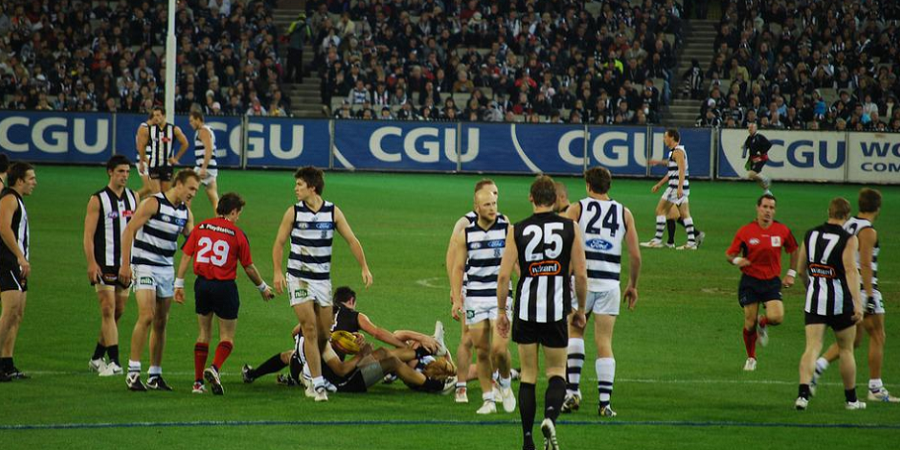Every sport has its own unique origins. Golf began in 15th century Scotland with a group of people hitting a pebble around with a stick, while basketball was created in the late 19th century by a PE teacher as a way to keep his students fit without exposing them to as many injuries as American football. Australian Rules, however, is one of the most unique sports on the planet — so just how did the AFL game originate, and how has it evolved over the years?
The origins of the game
Australian Rules Football began to develop in the mid-19th century in Melbourne as a combination of numerous sports. It’s regularly cited as including elements of both an Aboriginal game known as Marngrook and Gaelic football, but a type of football played at English private schools is typically seen as the major inspiration.
What is historically recognised as the first official game of Australian Rules Football took place in 1858 when Scotch College and Melbourne Grammar, two private schools in Melbourne, played against one another. The problem was, each of the English schools credited as inspiring the sport had employed a different set of rules for their games of football. As a result, when it began to be played in Australia, there were regularly disagreements about what game everyone was actually playing, and what the rules were. A group of seven Melbourne Cricket Members thus came together to create an agreed upon set of rules in 1859.
The development of professional leagues
Those early games, evidently, was the game very much in its infancy, but within a little over a decade there were already 10,000 people coming to watch individual matches. The potential popularity of the sport was plain to see, and by the turn of the century the league which is now known as the AFL was formed.
The Victorian Football Association was established in 1877 and became the premier football competition, but it was 20 years later in 1897 that the VFL began. This was essentially a breakaway league which included the strongest clubs from the VFA, as well as a couple of new teams.
For nearly 100 years, the league remained exclusively Victorian, even though the game had grown significantly around the country and many very successful clubs had formed interstate. In 1990, the newly formed West Coast Eagles joined the league and South Melbourne moved to Sydney, and the AFL – a truly national competition – was born. Soon after a number of other teams followed, including the likes of South Australian powerhouse Port Adelaide, and 30 years later there are eight teams from outside Victoria, many of them among the favourites for the AFL Premiership.
How the game has changed
For much of its existence, the way in which Australian Rules Football is played has followed a fairly similar template, but like in many other sports the AFL evolution has been drastic in recent years. No longer is kicking a significantly more common way to dispose of the ball than handballing, no longer do teams defend exclusively one-on-one, and no longer do teams move the ball predominantly by booting the ball as far as possible.
For better or for worse, the game has become significantly more complicated in recent years, with greater defensive understanding and better skills and fitness on the part of players contributing to this. Nowadays, the complexities surrounding the AFL and the way it’s played are greater than ever before, and it’s a far cry from the disorganised chaos that it was in mid-19th century Melbourne.










